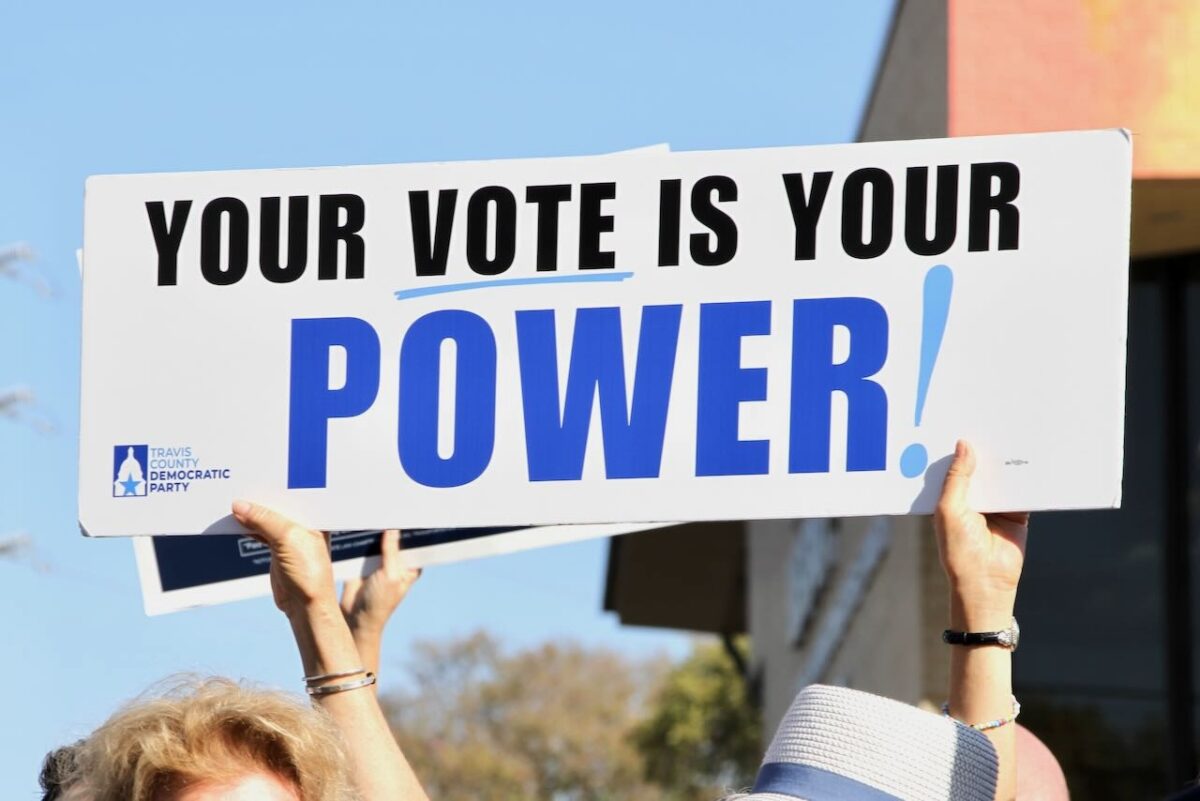
Harris has vowed to strengthen workers’ rights, expand financial support for the working class, boost opportunities for non-college graduates, and raise the minimum wage. Trump, meanwhile, has promised to implement tariffs on imports and repeal federal investments in clean energy, both of which would likely lead to job losses. (Graphic by Francesca Daly)
Harris has vowed to strengthen workers’ rights, expand financial support for the working class, boost opportunities for non-college graduates, and raise the minimum wage. Trump, meanwhile, has promised to implement tariffs on imports and repeal federal investments in clean energy, both of which would likely lead to job losses.
With Election Day just two weeks away, voters are continuing to make clear that the most important issue for them in this year’s presidential election is the economy and their sense of financial security.
The two candidates — Democrat Kamala Harris and Republican Donald Trump — have very different approaches to economic issues, such as the high cost of child care, groceries, and housing. They also have wildly different plans on their tax policy and how to help small businesses.
Now, it’s time to explore the candidates’ plans for American workers.
Harris vows to protect and expand workers’ rights
Harris has vowed to protect workers’ rights if elected.
During a campaign event in Michigan over the weekend, Harris praised union members for a number of standards they helped implement in the US.
“You know, everywhere I go, I tell people, you may not be a union member, but you better thank unions for a five-day work week, for sick leave, for paid family leave and vacation time, because we are all clear: collective bargaining benefits our entire nation–our entire nation,” she said.
Harris has vowed to pass the Protecting the Right to Organize (PRO) Act if elected — legislation that would give workers more power to organize and collectively bargain. This bill is supported by the nation’s largest labor union — the AFL-CIO — as well as the American Federation of Teachers, United Food and Commercial Workers, and several other unions.
The PRO Act would also impose financial penalties on companies that illegally interfere with their employees’ union rights and speed up the collective bargaining process after union elections.
Harris has also proposed expanding the Earned Income Tax Credit, which gives working-class Americans a tax break, lowering what they owe or giving them a larger refund.
Under her plan, more Americans without kids who work lower-income jobs would become eligible for the credit. This year, for workers without kids, the maximum credit is $632. Harris has proposed increasing that maximum to about $1,500.
Harris also has vowed to do her part to expand opportunities for non-college educated workers by eliminating four-year degree requirements that are not needed for half a million federal jobs.
According to the Brookings Institution, degree requirements “significantly affect” around 70 million workers who are unable to obtain jobs they are otherwise qualified for.
These workers gain relevant skills through other means, the Harris campaign argues, such as community college programs, military service, on-the-job experience, and apprenticeships.
For workers who are looking to pursue a four-year degree, Harris has additionally vowed to fight for affordable, high-quality child care and preschool and for strong public education, so that workers can focus on their jobs and not worry about their children while they’re being cared for.
Harris also plans to fight to raise the minimum wage, end the sub-minimum wage for tipped workers and people with disabilities, and eliminate taxes on tips for service and hospitality workers.
Trump’s proposed anti-worker policies
Trump has vowed to “protect” American workers through a series of measures he claims would help them — instituting tariffs on imports, reshoring American jobs, deporting undocumented immigrants, and repealing certain clean energy provisions.
Trump has proposed a 20% tariff on all imported goods and a 60% tariff on Chinese imports in an effort to boost domestic manufacturing. Trump’s tariffs could actually have the opposite effect, however, and end up costing jobs.
Morgan Stanley economists estimate that the implementation of these tariffs would mean 70,000 fewer jobs created each month in the US.
The repercussions of these tariffs “would be felt by every firm that sells imported goods and by every firm that uses imported inputs to run its business” according to the Brookings Institution. Production would be depressed, employment would likely fall, and prices would rise.
The former president also plans to implement a four-year national reshoring plan to bring jobs back from overseas, so that “the United States no longer needs to rely on China for essential medical and national security goods.” He also plans to “ban Chinese ownership of all critical infrastructure in the United States” and ban companies that outsource jobs from doing business with the federal government.
Notably, while Trump was in office, he pushed for a corporate tax cut bill that gave companies a 50% tax break on their foreign profits, making it financially advantageous for them to move jobs overseas. The “Tax Cuts and Jobs Act,” which Congress passed in 2017, also allows companies to be tax exempt from a 10% return on tangible investments that are made outside the US.
In total, roughly 200,000 American jobs were offshored during Trump’s presidency.
The former president also proposes a “merit-based” immigration system on his policy page, without offering any additional explanation of what that would entail. This, he says, will “put American workers first.”
Although Trump says that his policies will “help American farmers,” deporting millions of undocumented immigrants, as Trump has vowed to do, would make it harder for migrant workers to legally work in the US and would severely impact the agriculture industry throughout the country as immigrant farm workers make up roughly half of the US farm workforce.
Trump has also vowed to repeal clean energy and electric vehicle (EV) investments made by the Biden-Harris administration if elected. Through funding provided by legislation such as the Bipartisan Infrastructure Law and the Inflation Reduction Act, the current administration has helped create hundreds of thousands of manufacturing, construction, and transportation jobs. If Trump were to repeal the clean energy and EV investments made through those bills, many of those workers would likely lose their jobs.
United Auto Workers President Shawn Fain spoke about this possibility earlier this month in Michigan, where he warned that a Trump presidency could threaten auto factories and supply chains nationwide.
“Donald Trump is a billionaire who’s never worked a real job in his life,” Fain said in a statement. “He doesn’t know the first thing about hard work, and he wouldn’t last a day in an auto plant. He isn’t fit to be an autoworker, and he certainly isn’t fit to be the president.”
“Trump doesn’t understand us, he doesn’t respect us, and he certainly doesn’t represent us,” he added. “Trump doesn’t care about autoworkers. The only thing Donald Trump wants from autoworkers is a vote. Donald Trump is a scab!”
Trump has also proposed eliminating taxes on tips for service and hospitality workers, a policy he and Democratic nominee Kamala Harris have in common.
Trump’s record on workers during his first term
Trump’s record on worker policy while he was in office also provides insight into what he might do in a second term. During his first term, his administration embraced numerous anti-worker policies, encouraged the outsourcing and offshoring of American jobs, and failed to protect American workers during the COVID-19 pandemic.
For example, his Labor Department changed the rules of who qualified for overtime pay in 2019, making more than eight million workers ineligible for overtime, costing them a combined $1 billion-plus per year in lost wages. Trump also opposed legislation that would have raised the national minimum wage to $15 per hour while in office.
Trump-appointed National Labor Relations Board members also made it more difficult for unions to win representation at non-union workplaces and allowed for the misclassification of workers, which threatened their ability to join a union in the first place.
Additionally, Project 2025, the 900-page far-right plan for a second Trump term, calls for eroding, if not totally eliminating, the right to collectively bargain and suggests calling on Congress to “consider whether public-sector unions are appropriate in the first place.”












